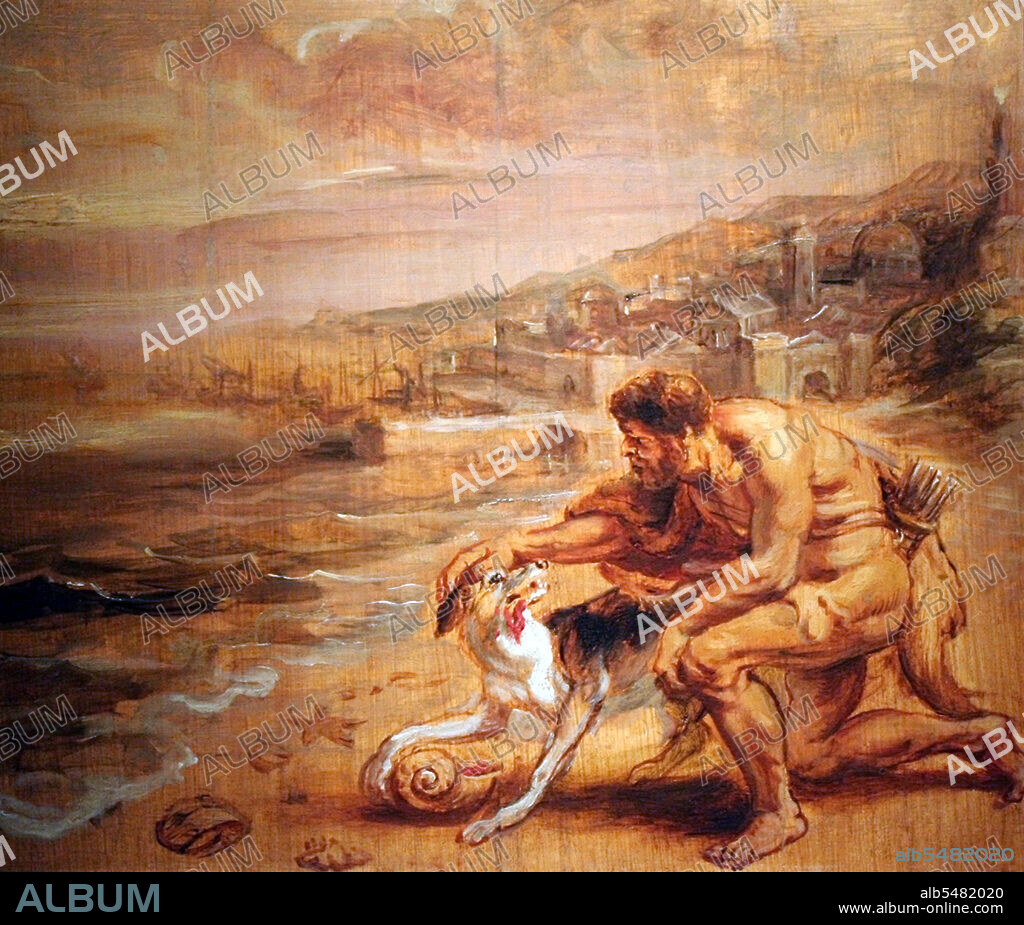alb5482020
Heracles' dog discovers the Purple Tyrian dye-producing properties of the murex snail on the shore of the Levant.

|
Zu einem anderen Lightbox hinzufügen |
|
Zu einem anderen Lightbox hinzufügen |



Haben Sie bereits ein Konto? Anmelden
Sie haben kein Konto? Registrieren
Dieses Bild kaufen

Titel:
Heracles' dog discovers the Purple Tyrian dye-producing properties of the murex snail on the shore of the Levant.
Untertitel:
Siehe automatische Übersetzung
The Roman mythographer Julius Pollux, writing in the 2nd century BCE, asserts (Onomasticon I, 45-49) that Purple Tyrian dye was first discovered by Heracles, or rather, by his dog, whose mouth was stained purple from chewing on snails along the coast of the Levant. However, the recent archaeological discovery of substantial numbers of Murex shells on Crete suggests that the Minoans may have pioneered the extraction of Imperial purple centuries before the Tyrians. Dating from collocated pottery suggests the dye may have been produced during the Middle Minoan period in the 20th-18th century BCE. Accumulations of crushed murex shells from a hut at the site of Coppa Nevigata in southern Italy may indicate production of purple dye there from at least the 18th century BCE.
Bildnachweis:
Album / Pictures From History/Universal Images Group
Freigaben (Releases):
Model: Nein - Eigentum: Nein
Rechtefragen?
Rechtefragen?
Bildgröße:
4454 x 3793 px | 48.3 MB
Druckgröße:
37.7 x 32.1 cm | 14.8 x 12.6 in (300 dpi)
Schlüsselwörter:
ASIEN • ASIEN, KONTINENT • BELGIEN • DEUTSCHLAND • GEMAELDE • GESCHICHTE • KONTINENT, ASIEN • KUENSTLER • KUNST • KÜNSTLER • LEBANON • LEVANTE • LIBANON • MALEREI • MUREX • RUBENS, PETER PAUL • ZEITGESCHICHTE
 Pinterest
Pinterest Twitter
Twitter Facebook
Facebook Link kopieren
Link kopieren Email
Email
